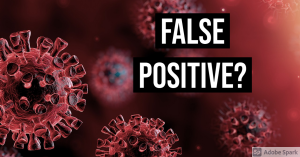There are many questions that have yet to be answered about the COVID-19 coronavirus pandemic, but thanks to the hard work of many researchers, scientists, and journalists, there is more information coming out about this illness. One particularly shocking study from the New York Times reports that up to 90% of COVID-19 tests may show false positives.
The most widely used diagnostic test for the new coronavirus, called a PCR test, provides a simple yes-no answer to the question of whether a patient is infected.
But similar PCR tests for other viruses do offer some sense of how contagious an infected patient may be: The results may include a rough estimate of the amount of virus in the patient’s body.
“We’ve been using one type of data for everything, and that is just plus or minus — that’s all,” Dr. Mina said. “We’re using that for clinical diagnostics, for public health, for policy decision-making.”
But yes-no isn’t good enough, he added. It’s the amount of virus that should dictate the infected patient’s next steps. “It’s really irresponsible, I think, to forgo the recognition that this is a quantitative issue,” Dr. Mina said.
The PCR test amplifies genetic matter from the virus in cycles; the fewer cycles required, the greater the amount of virus, or viral load, in the sample. The greater the viral load, the more likely the patient is to be contagious.
This number of amplification cycles needed to find the virus, called the cycle threshold, is never included in the results sent to doctors and coronavirus patients, although it could tell them how infectious the patients are.
In three sets of testing data that include cycle thresholds, compiled by officials in Massachusetts, New York and Nevada, up to 90 percent of people testing positive carried barely any virus, a review by The Times found.
On Thursday, the United States recorded 45,604 new coronavirus cases, according to a database maintained by The Times. If the rates of contagiousness in Massachusetts and New York were to apply nationwide, then perhaps only 4,500 of those people may actually need to isolate and submit to contact tracing.
One solution would be to adjust the cycle threshold used now to decide that a patient is infected. Most tests set the limit at 40, a few at 37. This means that you are positive for the coronavirus if the test process required up to 40 cycles, or 37, to detect the virus.
Tests with thresholds so high may detect not just live virus but also genetic fragments, leftovers from infection that pose no particular risk — akin to finding a hair in a room long after a person has left, Dr. Mina said. (source)
If these findings can be replicated, it would be incredible.
This is not to say that the virus is not real or it has not killed people. It certainly has. However, it also suggests that there is a lot more to this virus than just illness, and that as I and many others have noted, while the medical consequences can be serious, the political consequences are even more serious and deadly from the virus, as pandemics often precede economic chaos that brings about war, and considering the damage that the economic shutdowns have done to the global economy and the US dollar, it is also the perfect excuse for, if one wanted it to be so, a further collapse of the existing systems by intentional design so to instigate a major war.



